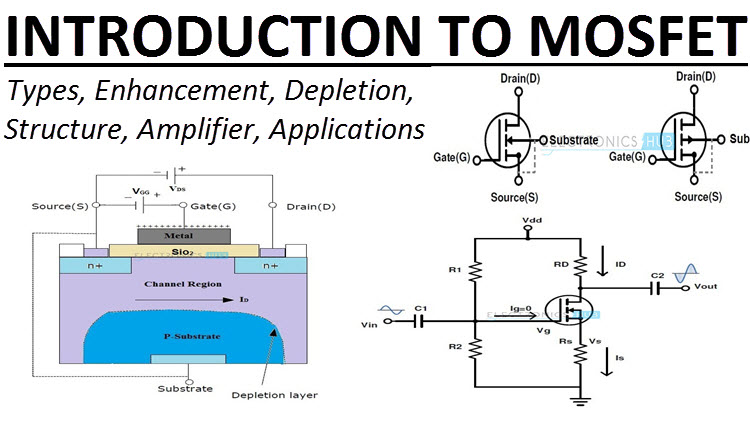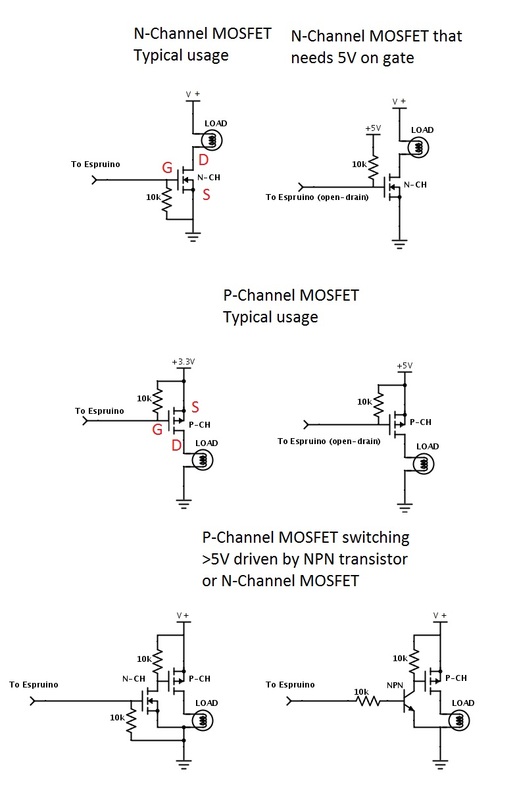- Discuss About The Characteristics Of N-channel Enhancement Type Mosfet
- P Channel Enhancement Mode Mosfet
An enhancement-type MOSFET is so named an enhancement device, because as the voltage to the gate increases, the current increases more and more, until at maximum level. An enhancement-type MOSFET behaves very similar in action to a bipolar junction transistor. The other type of MOSFET, a depletion-type MOSFET, has the complete opposite behavior.
- N-channel enhancement mode BSH105 MOS transistor MECHANICAL DATA Fig.15. SOT23 surface mounting package. This product is supplied in anti-static packaging. The gate-source input must be protected against static discharge during transport or handling. Refer to SMD Footprint Design and Soldering Guidelines, Data Handbook SC18.
- Main Difference Between Depletion MOSFET and Enhancement MOSFET MOSFET. MOSFET is an acronym for Metal Oxide Semiconductor Field Effect Transistor. It is a type of FET (Field Effect Transistor) that has an insulated metal oxide layer between its gate and channel. On the contrary, JFETs gate is connected with its channel.
- Enhancement mode: When the gate voltage is negative with respect to source, the depletion type MOSFET (metal oxide semiconductor field effect transistor) operates with an enhancement mode. The construction of N channel enhancement type MOSFET (metal oxide semiconductor field effect transistor) is shown in above figure. Onto a lightly doped P.
Enhancement mode :

When the gate voltage is negative with respect to source, the depletion type MOSFET (metal oxide semiconductor field effect transistor) operates with an enhancement mode.
The construction of N channel enhancement type MOSFET (metal oxide semiconductor field effect transistor) is shown in above figure. Onto a lightly doped P type substrate, two heavily doped N regions separated by about 25 µm are diffused. These N regions will act as a source and drain. A thin layer of insulating SiO2 is developed over this surface and holes are cut into the oxide layer through which aluminum contacts for the source and the drain are made. A conducting layer of aluminum which will act as gate is overlaid on SiO2 over the entire channel region. The construction of enhancement type N channel MOSFET is different from the depletion type MOSFET in the sense that it has no physical channel. It may be noted that the P type substrate extends the SiO2 layer completely.

Related Articles:
Enhancement mode :
Discuss About The Characteristics Of N-channel Enhancement Type Mosfet
When the gate voltage is negative with respect to source, the depletion type MOSFET (metal oxide semiconductor field effect transistor) operates with an enhancement mode.
The construction of N channel enhancement type MOSFET (metal oxide semiconductor field effect transistor) is shown in above figure. Onto a lightly doped P type substrate, two heavily doped N regions separated by about 25 µm are diffused. These N regions will act as a source and drain. A thin layer of insulating SiO2 is developed over this surface and holes are cut into the oxide layer through which aluminum contacts for the source and the drain are made. A conducting layer of aluminum which will act as gate is overlaid on SiO2 over the entire channel region. The construction of enhancement type N channel MOSFET is different from the depletion type MOSFET in the sense that it has no physical channel. It may be noted that the P type substrate extends the SiO2 layer completely.
P Channel Enhancement Mode Mosfet
Related Articles:
